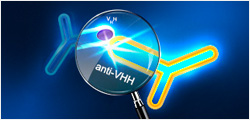| Species |
Mouse |
| Protein Construction |
CXCL10 (Ile22-Pro98)
Accession # P17515 |
|
| Purity |
> 97% as analyzed by SDS-PAGE
> 97% as analyzed by HPLC |
| Endotoxin Level |
< 1 EU/μg of protein by LAL method |
| Biological Activity |
The biologically active determined by a chemotaxis bioassay using human peripheral blood lymphocytes is in a concentration range of 0.1-10.0 ng/ml in the presence of IL-2. |
| Expression System |
E. coli |
| Theoretical Molecular Weight |
8.7 kDa |
| Formulation |
Lyophilized from a 0.2 µm filtered solution in 2 × PBS, pH 7.4. |
| Reconstitution |
It is recommended that this vial be briefly centrifuged prior to opening to bring the contents to the bottom. Reconstitute the lyophilized powder in sterile distilled water or aqueous buffer containing 0.1 % BSA to a concentration of 0.1-1.0 mg/ml. |
| Storage & Stability |
Upon receiving, this product remains stable for up to 6 months at -20°C or -70°C. Upon reconstitution, the product should be stable for up to 1 week at 2-8°C or up to 3 months at -20°C. Avoid repeated freeze-thaw cycles. |
| Target Background |
CXCL10 also known as IP-10 is belonging to the CXC chemokine family. It is encoded by the CXCL10 gene, and in murine it is also named the CRG-2 gene. The gene was originally identified as an immediate early gene induced in response to macrophage activation. This chemokine elicits its effects by binding to the cell surface chemokine receptor CXCR3. CXCL10 has been shown to be a chemoattractant for activated T-lymphocytes and monocytes/macrophages. It also has other roles, such as promotion of T cell adhesion to endothelial cells, and inhibition of bone marrow colony formation and angiogenesis. Murine CXCL10 shares approximately 67 % amino acid sequence identity with human CXCL10. |
| Synonyms |
IP-10; Small-inducible Cytokine B10; C7; Interferon-gamma Induced Protein CRG-2 |
For laboratory research use only. Direct human use, including taking orally and inj�������ection and clinical use are forbidden.

































